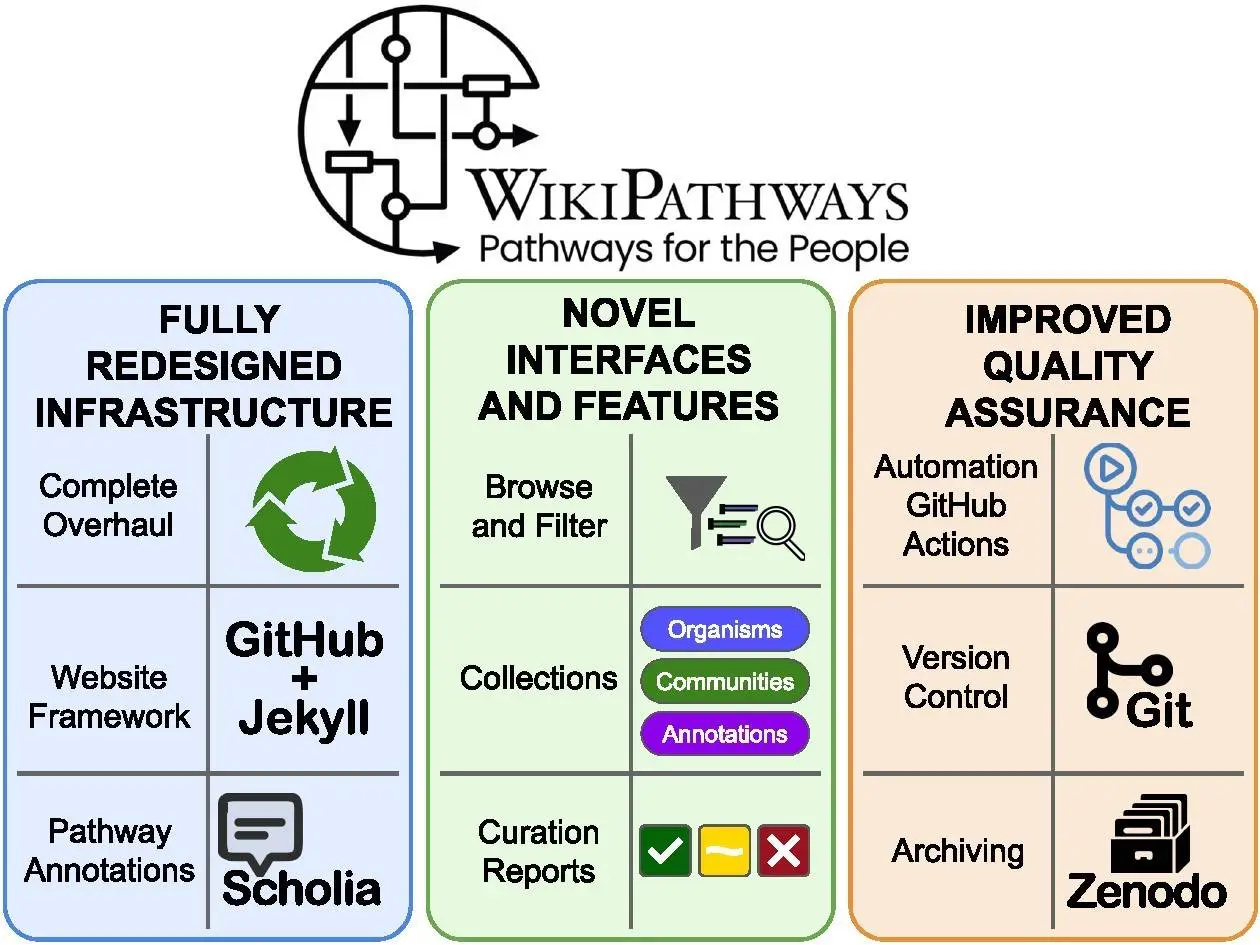WikiPathways is an open-access biological pathway database that was first launched in 2007. It is still being developed and updated by a group of researchers at the Broad Institute and the University of California in San Francisco. PathwayWiki is an activity that includes building and editing models of pathways by researchers from every corner of the world. The WikiPathways project has recently undergone a major overhaul, to make the database more user-friendly and accessible. The recently updated version of the WikiPathways which was posted in 2024 comes with many things such as several new features, including a redesigned website, a new pathway submission process, and a new pathway review process.
What are pathways?
A pathway is a logical sequence of molecular interaction events in a biological system or a metabolic or signaling process Pathways are complex biological processes that can be schematized and understood.
Key Features and Improvements
Redesigned Website: The WikiPathways website has been completely overhauled with a fresher and more user-friendly interface. The new design improves user interaction through increased accessibility to important components by reducing the number of clicks required to perform certain actions.
Pathway Submission and Review Process: The activity of pathway submission has been modified creating a possibility for researchers to contribute directly using the PathVisio pathway editing tool. This has also altered the review of pathways which is now done with the help of a network of quality managers who check the pathways for accuracy.
Enhanced Search and Visualization Tools: The capability of the pathway search tool has been upgraded such that searching by name, organism or word is now easier and more effective. In addition, the pathway visualization tool provides more options for modifications, which in most cases user needs regarding the presentation of the pathways are not provided within the software.
Expanded Download Options: The available download options tendencies have also been extended regarding the path or cluster graphics: other GPML, SVG, and PDF formats of the maps have become available for saving. In the case of the download tool, it also appears possible to obtain the pathways in the form of collections.
Enhanced Data Availability: WikiPathways has made data that could be cumbersome to get, more accessible by way of URL access, SPARQL, web services, client-side libraries, and Zenodo among others. This makes it possible for researchers to automatically retrieve path information and analyze it.
Links to Related Software: Issues with the construction of pathways are not the problems in working with WikiPathways as content can be exported to standard bioinformatics software including clusterProfiler, enrich, staged analyses, and Cytoscape.
Community development: WikiPathways continues to be an open project that welcomes researchers around the world to contribute to the project. This ensures that the development of the database is community-oriented, with the users having an opportunity to help in future developments of the database.
How to Use WikiPathways
To utilize WikiPathways effectively, researchers can:
Create an Account: Create a WikiPathways account here to perform all the available features on data entry and lookup features.
Search for Pathways: The advanced search tool is effective in locating pathways given by name, organism, or keyword.
Explore Pathways: View pathways divided amongst categories or in-depth views of pathways.
Edit and Contribute: wikiPathwas is open to all however, assistance towards path advancement can be received from editing/publishing of pathways.
Download and Analyze: Download pathways in various formats and integrate them with other bioinformatics tools for analysis and visualization.
Benefits of Using WikiPathways
Comprehensive Pathway Collection: One can find a collection of pathway models in WikiPathways where each of such has been systematically defined and is rich in data supporting multiple biological systems.
Collaborative Platform: Due to the collaborative feature of WikiPathways, people can add or make enhancements to the existing database.
User-Friendly Interface: The restructured portal and modern functionalities provide ways in which WikiPathways does not pose research challenges to any researcher.
Integration with Other Tools: WikiPathways provides absolute compatibility with existing bioinformatics programs and aids data analysis.
Open Access: WikiPathways does not limit researchers from accessing the contents regardless of their geographical area.
Conclusion
WikiPathways 2024 is an improvement of the possibility of researchers as reported biological pathways databases. Some of the features that are also guaranteed to remain include improved usability, improved accessibility, and enhanced inclusion of other existing tools making it useful to the diverse groups of researchers interested in the investigation of a broader scope of biological processes. Thanks to WikiPathways, researchers no longer need to decipher complex biological processes and draw certain conclusions that would be beyond their vision or knowledge to help initiate the growth of science.
FAQ
To look for specific pathways, you can utilize the search feature located on the homepage and search for pathways by name, organism, or words in the description. You may also view pathways organized into sets or check out related pathways.
Yes, the pathways stored in WikiPathways can be edited by you. This means you can help the database by enhancing the representation and comprehensiveness of the pathway models.
It is possible to obtain pathways in GPML, SVG, or PDF format, among others. The options for download are found on the pat
Yes, it is possible to combine WikiPathways data with some, such as Cytoscape, Enrichr clusterProfiler, and other bioinformatics tools. This makes it possible to carry out different kinds of analyses and views.
Article Source: Reference Paper | WikiPathways is available at https://wikipathways.org/
Follow Us!
Learn More:
Anchal is a consulting scientific writing intern at CBIRT with a passion for bioinformatics and its miracles. She is pursuing an MTech in Bioinformatics from Delhi Technological University, Delhi. Through engaging prose, she invites readers to explore the captivating world of bioinformatics, showcasing its groundbreaking contributions to understanding the mysteries of life. Besides science, she enjoys reading and painting.
















